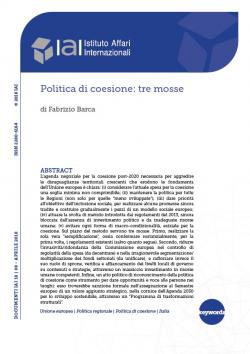Politica di coesione: tre mosse
The negotiating agenda for the post-2020 cohesion that the Union needs to tackle the increasing territorial inequalities eroding the foundations of the European Union is clear: (i) consider the current cohesion expenditure as a minimum non-compressible threshold; (ii) maintain the policy for all Regions (not only the “less developed” ones); (iii) prioritize the goal of social inclusion, to realize some previously unfulfilled promises and gradually build a European social model; (iv) implement the change in method introduced by the 2013 regulations, hitherto blocked by the lack of political investment and inadequate human resources; (v) avoid any form of macro-conditionality, which is fatal for cohesion. In terms of method, three moves are required. First, implement the only true “simplification”, that is substantially confirm, for the first time, the existing regulations. Second, reduce the European Commission’s invasiveness/redundancy in controlling expenditures (to be decentralized) and in its unreasonable segmentation/multiplication of sectoral funds (to be unified); instead it should strengthen its role in stimulating, verifying and supporting local levels of governance as regards contents and strategies through massive investment in competent human resources. Finally, undertake the political act of recognizing cohesion policy as a tool to give a voice and opportunities to people in places: its formal approval would assign strategic value added to the European Semester – within the framework of the 2030 Agenda for sustainable development – through a “Programme for structural transformations”.
Paper prepared in the framework of the project “Quadro finanziario pluriennale dell’Ue 2021-2027. Risorse, strumenti e possibili sviluppi”, March 2018. Presented at the conference "Quali priorità per l’Europa del futuro. Il Quadro finanziario pluriennale dell’Unione europea”, Rome, 17 April 2018.
-
Details
Roma, IAI, April 2018, 13 p. -
In:
-
Issue
18|08
1. La ratio della politica di coesione e le crescenti disuguaglianze
2. Gli errori dell’Unione europea e la svolta del 2013
3. Il giudizio sulla svolta del 2013
4. La strategia negoziale in tre mosse
5. Politiche di coesione e macro-condizionalità
Conclusione
Riferimenti



